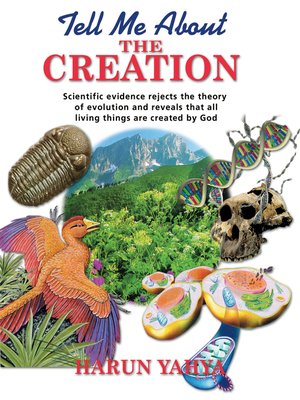
Sign up to save your library
With an OverDrive account, you can save your favorite libraries for at-a-glance information about availability. Find out more about OverDrive accounts.
Find this title in Libby, the library reading app by OverDrive.



Search for a digital library with this title
Title found at these libraries:
| Library Name | Distance |
|---|---|
| Loading... |
The idea that life is the product of an uncontrolled, purposeless process of coincidence is a 19th century myth. Looking at the matter from the primitive level of the science of the period, evolutionists assumed that life was very "simple".
There are more than a million species living on the earth. How did these creatures with entirely distinct features and perfect designs come into being? Anyone who uses his reason would understand that life is the work of a perfect and supreme creation.
However, the theory of evolution denies this explicit truth. It holds that all species on earth evolved from one another through a process based on random occurrences.
The first person to seriously take up the issue of evolution – an idea which originated in Ancient Greece – was the French biologist Jean Baptiste Lamarck. Lamarck's theory, which he postulated in the early 19th century, maintained that "living things transferred the traits they acquired during their lifetime to subsequent generations." In Lamarck's view, for instance, giraffes had evolved from antelope-like animals who extended their necks further and further as they tried to reach higher branches for food. The advent of the science of genetics, however, refuted Lamarck's theory once and for all.
The second important name to defend the theory after Lamarck was a British amateur naturalist, Charles Darwin. In his book The Origin of Species, published in 1856, he claimed that all species descended from a common ancestor through coincidences. According to Darwin, for instance, whales evolved from bears that tried to hunt in the sea.1
Darwin had serious doubts as he put forward his assertions. He was not so confident of his theory. He confessed to there being many points which he was unable to explain in the chapter titled "Difficulties On Theory". Darwin had hoped that these problems would be solved in the future with the progress of science, and made some projections. 20th century science, however, disproved Darwin's claims one by one. The common point of Lamarck's and Darwin's theories was that both rested on a primitive understanding of science. The absence of various domains of science such as biochemistry and microbiology at the time led evolutionists to think that living things had a simple structure that could form by chance. Since the laws of genetics were not known, it was supposed that creatures could simply evolve into new species.
The progress of science overthrew all of these myths and revealed that living things are the work of a superior creation.







